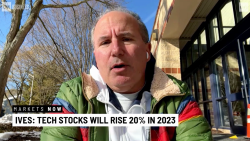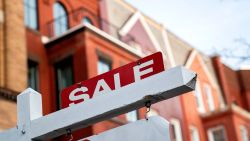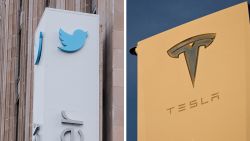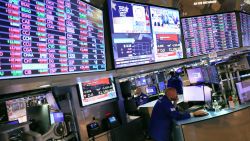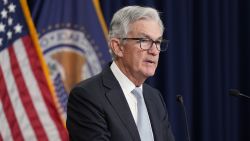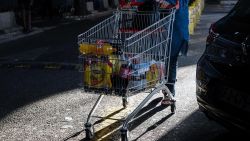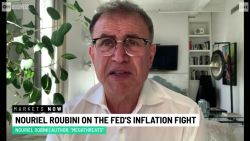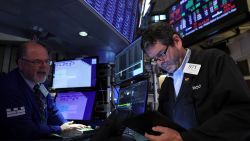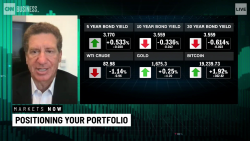The US-China trade war might be having a chilling effect on business investment, but it’s not derailing the splurge in share buybacks.
S&P 500 companies are on track to buy back another $940 billion of stock in 2019, according to Goldman Sachs. That would easily surpass the record buyback boom set off last year by President Donald Trump’s corporate tax cut.
But Corporate America’s rush to pay out shareholders could be getting out of hand.
“Payout ratios are elevated, cash balances have declined and leverage has risen to a new all-time high,” David Kostin, chief US equity strategist at Goldman Sachs, wrote in a recent note to clients.
In an alarming development, companies are now returning more cash to shareholders than they are generating in free cash flow. It’s the first time that has happened in the post-crisis period, according to Goldman Sachs.
Nonfinancial S&P 500 returned a healthy 82% of free cash flow to shareholders via buybacks and dividends in 2017, the firm said. But that metric surged to 104% during the 12 months that ended in March.
Borrowing money could make sense right now given extremely low interest rates driven by easy money from global central banks. The Federal Reserve is widely expected to lower interest rates on Wednesday for the first time in nearly 11 years to boost growth and firm up soft inflation.
However, all of that borrowing could backfire if the economy stumbles or the Fed needs to reverse itself by quickly raising interest rates.
Apple alone is buying back $75 billion of stock
Wall Street loves buybacks because they lower the supply of shares and increase demand. By reducing the number of outstanding shares, each shareholder’s holdings go up. Buybacks also inflate per-share earnings, even when underlying profits stay the same.
Major American companies including Apple (AAPL), Wells Fargo (WFC) and DuPont (DD) have announced sizable buyback programs in recent months. Apple (AAPL) alone plans to repurchase another $75 billion of stock.
Procter & Gamble (PG) shares hit a record high on Tuesday after the maker of Bounty paper towels and Crest toothpaste announced plans to ramp up buybacks by up to 60% in the new fiscal year.
It’s not like the consumer products behemoth was stingy last year though. P&G returned $12.5 billion to shareholders through buybacks and dividends, exceeding the $12.1 billion it brought in through adjusted free cash flow.
Cash is shrinking at the fastest pace since at least 1980
To fund these aggressive buybacks, Corporate America has been forced to draw down their cash balances.
Nonfinancial S&P 500 companies slashed their cash holdings by $272 billion over the past 12 months, according to Goldman Sachs. Although that still leaves them with a ton of cash, the 15% decline marks the largest since 1980, the firm said.
Here’s another way to look at it: Goldman Sachs found that nonfinancial cash balances as a percentage of assets has declined from 12.7% in June 2017 to a nine-year low of 10.4% now.
Some of that cash is going towards job-creating business investment on items like factories and software. Another chunk is funding blockbuster mergers.
But Corporate America is setting aside its biggest spending increases for shareholder rewards, according to a recent Moody’s Investors Service report. Net share buybacks (share repurchases minus stock issuance) at US nonfinancial companies covered by Moody’s spiked 99% in 2018.
“The precipitous decline in cash balances has coincided with a sharp increase in corporate leverage,” Kostin said.
He pointed out that net leverage, or the amount of debt relative to adjusted pre-tax earnings, for the median S&P 500 company climbed to an all-time high during the past 12 months.
“Unless earnings growth accelerates materially, companies will likely continue to fund spending by drawing down cash balances and increasing leverage,” Kostin said.
Buyback backlash
Defenders of buybacks argue that excess cash should go back to shareholders rather than get wasted on inefficient projects. That capital could then be redeployed in the real economy, to fund startups and boost household spending.
“The money doesn’t vanish, it gets reinvested in higher growth businesses that boost the economy and jobs. Is that bad?” former Goldman Sach (GS)s CEO Lloyd Blankfein wrote on Twitter earlier this year.
However, the buyback boom has drawn the ire of Democrats and even some Republicans in Washington, especially since the stated reason for the 2017 tax law was to drive business investment – not shareholder returns.
“Stock buybacks are not good for workers. End of story,” Senator Sherrod Brown, Democrat from Ohio, wrote in a recent essay.
Brown plans to unveil new legislation on Wednesday aimed at curbing stock buybacks and creating a “worker dividend.”




